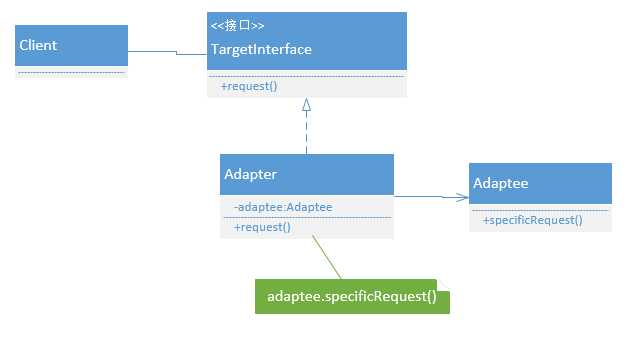标签:override over lin 接口 alt private public 实现 png
将一个类的接口,转换为客户期望的另一个接口,而不需要修改源码。
适配器模式可分为类适配器与对象适配器,类适配器一般需要多重继承,Java 并不支持,我们暂不讨论。

其中,TargetInterface为客户需要的接口,Adaptee为需要适配的对象,Adapter为适配器,其实现需要的接口,并将要适配的对象包装起来,在调用目标接口的方法时,实际执行Adaptee对象的相应方法。
// 要进行适配的类 public class Adaptee { public void specificRequest() { System.out.println("This is Adaptee specificRequest"); } } ? // 所需要的目标接口 public interface TargetInterface { void request(); } ? // 适配器类,负责将要适配的类转换为需要的接口 public class Adapter implements TargetInterface{ private Adaptee adaptee; ? public Adapter(Adaptee adaptee) { this.adaptee = adaptee; } ? @Override public void request() { adaptee.specificRequest(); } } ? // 测试客户类 public class Client { public static void main(String[] args) { TargetInterface target = new Adapter(new Adaptee()); target.request(); } }
适配器模式与装饰者模式比较类似,但是装饰者模式主要是添加新的功能,而适配器模式主要做的是转换工作。
适配器将一个对象包装起来以改变其接口;装饰者将一个对象包装起来以增加新的行为和责任。
标签:override over lin 接口 alt private public 实现 png
原文地址:http://www.cnblogs.com/zawier/p/7196478.html